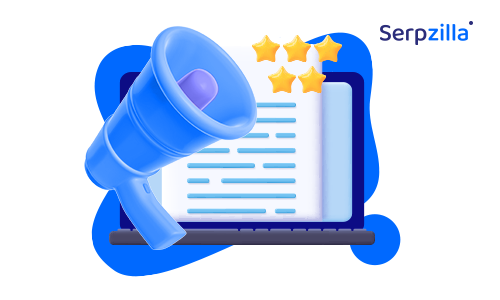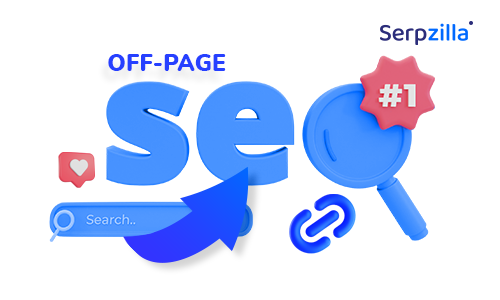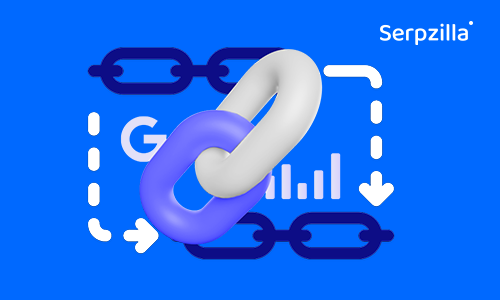Keyword Clustering: The What, Why and How
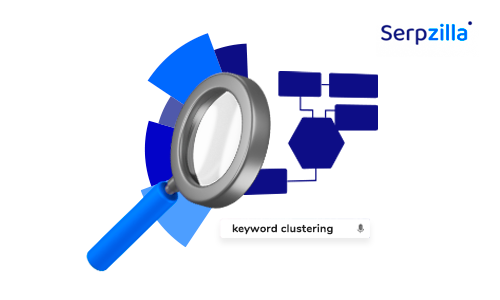
Keyword research is one area of SEO where innovations occur every day. It’s in the interests of both search engines and marketers to anticipate what users want and deliver it to them with minimal obstacles to the process.
No surprise, then, that keyword research has now turned into intent research.
The Evolution of Keyword Research
But where did this fast-paced evolution start and where is it going? Let’s start with the simple “keyword.” Keywords are simply search queries that you enter into the search box. The search engine processes the query and throws a formatted list of content that may or may not answer your question.
Traditionally, one keyword has been associated with one page. Typically, you decide to create a page filled with content for a keyword and then use variations of that keyword in the page content, URL, title, meta description, heading, sub-headings, image alt text and whatnot on the page.
In the early days, Google associated the pages on your site by the keywords you put on them – and so it rewarded consistency by ranking that page for more information that you put about that keyword.
Then, people started creating content for content’s sake. One page of content per keyword meant thousands of pages on every site and thousands of words on every page. Little content farms everywhere.
The Google algorithm tries to understand correlations better and separate the wheat from the chaff with various updates like Hummingbird, RankBrain, BERT, and more recently, the Helpful Content update. Google does this by applying concepts like natural language programming (NLP), semantics and entities.
Of course Google has evolved. But have you? Or do you still use the old methods of keyword research?
The Modern Approach to Keyword Research
When you optimize your page for one keyword – probably the only way you know of – it is BAD for the other keywords. Especially the ones that you don’t even know the same page can rank for!
At the same time!
If you have information to share on a set of related topics, if you’re targeting similar audience segments or cohorts, and if you’re optimizing for only one keyword per page, you’re losing out big time (even if that keyword has high search volume).
Because such a self-limiting strategy only downscales the other possibilities. In the long term, it increases the costs and efforts that you need to put into your messaging and promotion.
That begs the question: Can you optimize a single page for multiple, very different keywords? Will it save you time or budget? Should you even give it a try?
As with all things SEO, the answer is “It depends.”

But let me tell you exactly what it depends on.
You need to think about the keyword-page relationship in two different ways:
- What keyword is this page optimized for?
- What keywords this page already ranking for, and can possibly rank for?
Rather than choosing one over the other, you should take into account both approaches and their intended outcomes.
For example, consider the keyword “apple” (the fruit, not the tech company).
Some associated, semantically relevant topics could be fruits, juice, trees, pies, and so on. These could be distributed across different topical categories or themes such as diet, drinks, farming, and recipes respectively.
And you could rank for any of these keywords, such as apple pie or apple juice – without even having these words in the heading or title or meta description of the page. Regardless of the search volume of the keyword.
How is that possible?
Enter Keyword Clustering
A “keyword cluster” is a group of keywords that caters to searchers with similar intent – whether it is informational, navigational or transactional.
Many times, the grouping can be done using a common modifier, which is a word or phrase that expands the seed term. For example, words like “best,” “cheap” or “2023” lend more specification and context to the core search term and clarify the searcher’s intent further.
Here’s an example for you: Diwali is India’s biggest festival. “Diwali dresses” is a major search term with 22,000 monthly searches on Google. But if you have a page targeting just Diwali dresses and nothing else,
- You might never reach page 1 because of the competitiveness of the term.
- You will lose out on the associated searches with potential for 50 to 100% more traffic, with stronger purchase intent.
Fashion blog Stylefundas has an article on indo-western dresses for Diwali, which ranks for more than 100 keywords that are relevant as well as related (think about it) to the primary keyword. It also ranks for terms like:
- what to wear for diwali
- western look
- diwali party outfits
- western elegant dresses
- traditional diwali dresses
- can you wear black on diwali
- indo western wear
- diwali outfit
- trending dresses for diwali
- western dress ideas
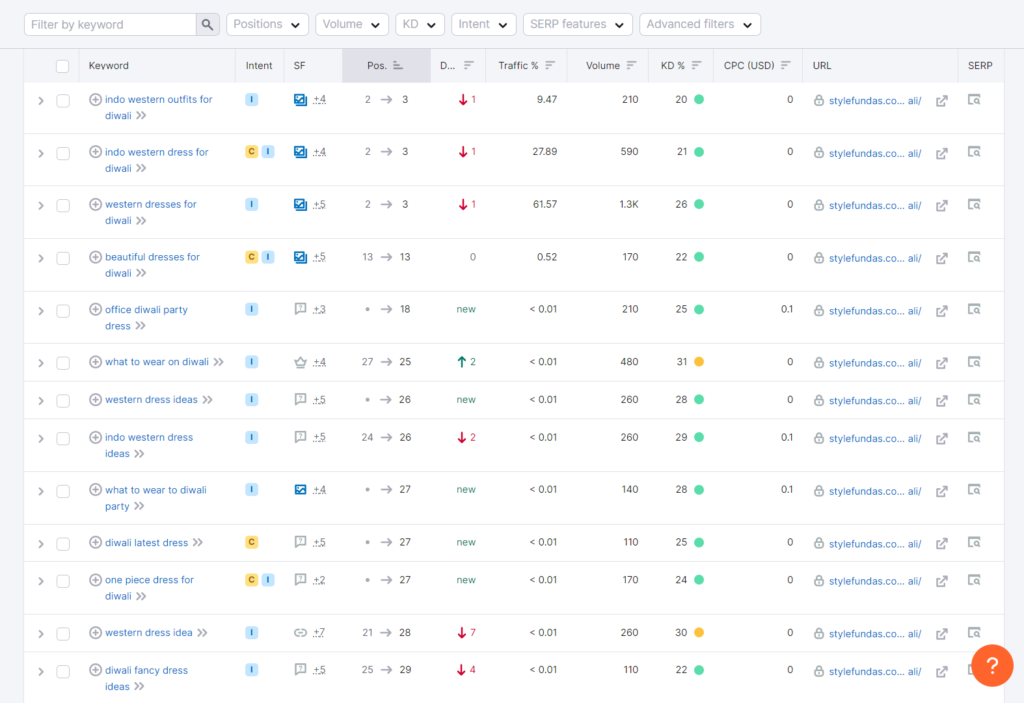
The biggest advantage of keyword clustering is that you don’t need to create separate pages or posts for all of the keywords under a content theme.
The disadvantage is that you should first start ranking for at least one of these sub-topics. This is easier said than done in many competitive niches. If you don’t rank for your main keyword, then the whole strategy just falls flat on its face.
But if you do, you can have astronomical benefits, including:
- Ranking for a lot more keywords per page than you ever imagined
- Higher visibility for long-tail keywords
- Faster ranking improvements for your primary or money keywords
- More comprehensive, more authoritative content
- More opportunities for internal linking
- Increased organic traffic because of wider targeting
How to Do Keyword Clustering
The objective is to rank for the main keyword as well as valuable secondary keywords that you might miss, but could turn out to be important for your audience. The double-advantage is that usually, these keywords have very low competition.
You can use all of these keywords on the same page – maybe in different sections that talk about the topic sub-categories you identified earlier. This gives you the depth and relevance necessary to rank for your head term or primary keyword while attracting visibility and traffic for all of its semantic sub-groups. Eventually, it will improve and cement your ranking for the main, high-volume keyword as well.
So here’s how to master keyword clustering in 3 simple steps:
- Start as you’d usually do. Choose one decent keyword and create just one page of content around it. Don’t get greedy and go for two unrelated head terms such as apples and oranges.
- Create a list of secondary keywords and group them into sub-topics. Create different sections in your page that talk about these different sub-topics.
- Promote these secondary keywords too. Use them as anchor text, ad copy or content in social media posts. These keywords will have lower competition, cost per click and keyword difficulty than your main keyword. This is the real power of keyword clustering.
Repeat infinitely.
Why Keyword Clustering Works So Well
While Google still gives priority to one keyword per page, it is now capable of making associations for all the semantically inter-related keywords on the page. If Google finds a keyword cluster on a page, the traffic to that page can increase by as much as 30% in a short time.
Even if you optimize for multiple keywords and build backlinks or run ads targeting all of them, Google is smart enough to pick the main keyword for the page.
But you’d better do your best to help it pick this one keyword. Keyword clustering is a tool that SEOs can use to try and guess the semantic associations that Google makes. It also helps you understand how Google reacts to any changes you make to your content.
Google is increasingly boosting pages that address entire topic clusters as opposed to just one specific sub-topic. Clusters probably signify more experience, expertise, authoritativeness and trustworthiness (EEAT) on the page. If you optimize your content before makes this shift completely, you’ll have an unsurpassable lead over your competition. Good luck!








